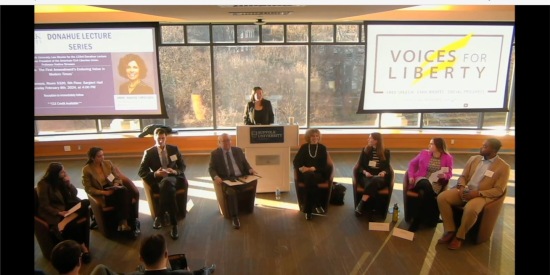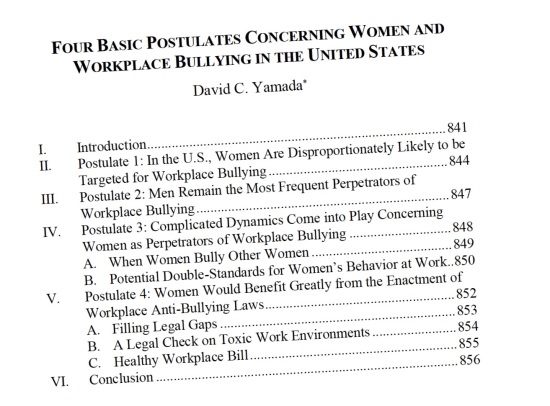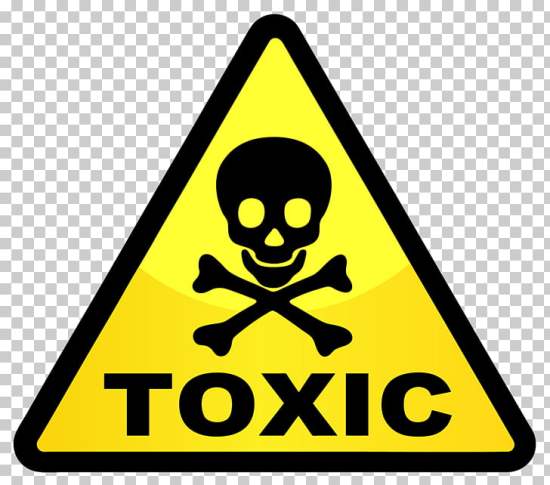
Screenshot from Inside Higher Education
Applying just about any conventional measure, law professor Amy Wax has built a spectacularly successful career. She holds a chaired professorship at an Ivy League law school (University of Pennsylvania). She has assembled a ferocious c.v. (link here), loaded with sterling academic and professional achievements, publications, and awards. Her degrees include a J.D. from Columbia and an M.D. from Harvard.
And yet she is under heavy fire for an ongoing, alleged series of polarizing, critical statements and negative characterizations about people of color, women, and gays. For that she faces potential discipline and loss of tenure protections. The Dean of her law school has asked the university’s faculty senate to impose sanctions on her, a possible prelude towards eventual termination proceedings.
Scott Jaschik, writing for Inside Higher Education (link here), provides a lot of details about this situation, which has received national attention. Here’s his lede:
Some students and faculty at the University of Pennsylvania have been clamoring for years for the ouster of Amy Wax, the polarizing law professor who courted scandal with incendiary and racist remarks and writings and seemed to relish the resulting controversies. Despite the repeated calls for her removal from her tenured position, and the criticisms of her actions—including by university leaders—that followed each controversy, Wax remained in the position and seemed firmly protected by free speech and academic freedom rights.
That pattern may be about to change: the dean of the Penn law school has started a process that could lead to Wax’s termination.
To be clear, we’re not talking about an isolated instance or two of questionable speech. From Penn Law dean Theodore Ruger’s memorandum to the Chair of the Faculty Senate (link here), here are some of Prof. Wax’s alleged statements, made to individual students, her classes, and public audiences:
- “Stating in class that Mexican men are more likely to assault women and remarking such a stereotype was accurate in the same way as ‘Germans are punctual.'”
- “Commenting in class that gay couples are not fit to raise children and making other references to LGBTQ people that a student reported evinced a ‘pattern of homophobia.'”
- “Commenting after a series of students with foreign-sounding names introduced themselves that one student was ‘finally, an American’ adding, ‘it’s a good thing, trust me.'”
- Telling a Black student…”who asked whether Wax agreed with [a panelist’s] statements that Black people are inherently inferior to white people, that ‘you can have two plants that grow under the same conditions, and one will just grow higher than the other.'”
- Telling a Black student “that Black students don’t perform as well as white students because they are less well prepared, and that they are less well prepared because of affirmative action.”
- “Stating, based on misleading citation of other sources, that ‘women, on average, are less knowledgeable than men,’ women are ‘less intellectual than men’ and there is ‘some evidence’ for the proposition that ‘men and women differ in cognitive ability.'”
- “Stating that ‘our country will be better off with more whites and fewer nonwhites.'”
- “Stating that Asians have an ‘indifference to liberty,’ lack ‘thoughtful and audacious individualism’ and that ‘the United States is better off with fewer Asians and less Asian immigration.’”
- “Stating that ‘there were some very smart Jews’ among her past students but that Ashkenazi Jews are ‘diluting [their] brand like crazy because [they are] intermarrying.'”
- “Stating that low-income students may cause ‘reverse contagion,’ infecting more ‘capable and sophisticated’ students with their ‘delinquency and rule-breaking.'”
- “Stating that ‘if you go into medical schools, you’ll see that Indians, South Asians are now rising stars. . . . [T]hese diversity, equity and inclusion initiatives are poisoning the scientific establishment and the medical establishment now.'”
In her recently posted GoFundMe appeal to create the “Amy Wax Legal Defense Fund” (link here), Prof. Wax states that Dean Ruger’s charges of inappropriate conduct are an attack on her conservative principles and are “littered with indignant invective and unsubstantiated and distorted claims.” She adds:
Penn Law Dean Ruger’s latest steps are part of a longstanding campaign at Penn Law School against me based on my stated positions, opinions, and speech, and despite my stellar performance as an award-winning teacher and academic during my decades-long career as a law professor. Penn’s actions represent an unprecedented and deeply destructive threat to the practice and traditions of free expression on campus and the tenure protections afforded to professors who express unpopular views. They are further evidence of the “woke” takeover of our university system, which seeks to stifle and punish dissent and purge our campuses of any deviation from a narrow set of progressive dogmas.
Academic freedom and tenure
While academic tenure may not be the lifetime job guarantee that some claim it is, it’s true that tenured professors at stable institutions who perform their work satisfactorily can expect continued employment. (For more about this topic, see my blog article, “What is academic tenure?,” link here.) And as a tenured professor at a prestigious university, Prof. Wax enjoys some of the strongest job protections available to any American employee.
One of the main purposes of tenure is to safeguard academic freedom in teaching, scholarship, and service activities. This includes freedom of expression, written or spoken. I regard academic freedom and tenure as carrying both rights and responsibilities. They include earned protections and accompanying obligations to perform one’s job with integrity. Tenure revocation is possible in cases of serious misconduct.
For controversial speech in such a context, I suggest that we establish a spectrum between being a thought-provoking scholar and being a simple provocateur.
The thought-provoking scholar pushes the boundaries of our assumptions and perceptions, using facts, analysis, interpretation, and sometimes creative expression. At times, this may include voicing or supporting unpopular viewpoints. The simple provocateur is more akin to a keyboard warrior, playing to the crowd in the comments section. This is the stuff of the internet troll and has very little to do with reasoned thought.
Where Amy Wax places on that spectrum may help us understand how her situation should be resolved. If her statements are considered so outlandish, irresponsible, and hurtful as to constitute misconduct, then sanctions may be in offing.
One of the most challenging considerations here is that we don’t have a bevy of comparable situations to give us guidance on how this should be handled. Assuming that Prof. Wax said or wrote most of the statements attributed to her, then this is a far cry from more typical scenarios that involve isolated instances or a small cluster of utterances deemed problematic.
It’s fair to point out that if Wax had been employed in a standard-brand, private-sector job setting (like a law firm or medical center), then it’s likely that she would’ve been terminated for cause already, perhaps following disciplinary warnings or a suspension. But academic freedom and tenure provide both substantive and procedural protections that most jobs do not offer.
Diversity and inclusion
You can easily see how the Wax situation is tailor-made for America’s tortured and fraught political and civic dialogue about diversity and freedom of expression. Her alleged statements have caused such an uproar because many have found them to be outrageous, hurtful, and wrongheaded. They’ve come at a time when “DEI” (diversity, equity, inclusion) is a deep focus of the day, in academe and corporate America alike.
Wax’s defenders range from those who agree with the substance of her alleged statements to those who place a very high value on academic freedom.
Workplace mobbing
Folks have every right to criticize or defend Wax. She should be subjected to appropriate discipline if she’s crossed a clear line. From my concededly distanced perch, I believe that she is at that line or has even crossed it. While some of her alleged statements may fall under the cloak of academic freedom, many others appear to be grounded in animus towards difference.
Whether one agrees with Wax or not, there’s always a risk that critical voices can become an unruly mob. I find Wax’s worldview deeply objectionable, but I’m not happy about workplace mobbing scenes either. Prof. Kenneth Westhues’ pathbreaking work on mobbing in academe has repeatedly illustrated how quickly and dramatically such behaviors can escalate.
I imagine that Prof. Wax is feeling quite under siege right now. I don’t envy her. If she does face any disciplinary proceedings, then I hope — for everyone’s sake — that they will be conducted with dignity, fairness, and honesty.
Cancel culture
Especially because there is no legal definition of cancel culture, it’s important that we have some understanding of what it means in the employment context. I suggest that we define cancel culture at work as a response claimed to be disproportionately harsh — typically, either severe discipline or termination — to statements or actions deemed objectionable, hurtful and/or controversial.
At this juncture, it’s hard for anyone to legitimately claim that Amy Wax has been “cancelled.” However, the University’s moves toward possible disciplinary action and/or termination will cause the term to be used. And especially if her tenure is revoked and she is dismissed, then notwithstanding any due process she had been accorded, the cries of cancel culture from certain circles will be loud and sustained.
If Wax does leave Penn under whatever circumstances, then she will very likely land on her feet. She will be accorded martyr status and will no doubt be hired by an institution more compatible with her social and ideological views.
Summing up
While admitting that I’ve waded into this conversation with some trepidation, I feel obliged to share my own sense of this situation. I consider many of Amy Wax’s alleged statements to be hurtful and divisive. They sound like those of a provocateur fueling an ugly, exclusionary worldview, rather than those of a thought-provoking professor who occupies a position of enormous privilege and responsibility.
Yup, issues surrounding diversity and difference are challenging and can yield honest differences of opinion. There is a place in that discussion for strong language. But I don’t think that the heart of Wax’s rhetoric is contributing to our understanding of these issues. Sadly, one thing I’m certain of is that the eventual outcome of this situation — whatever it happens to be — will drive a deeper wedge into our political and social divide.










